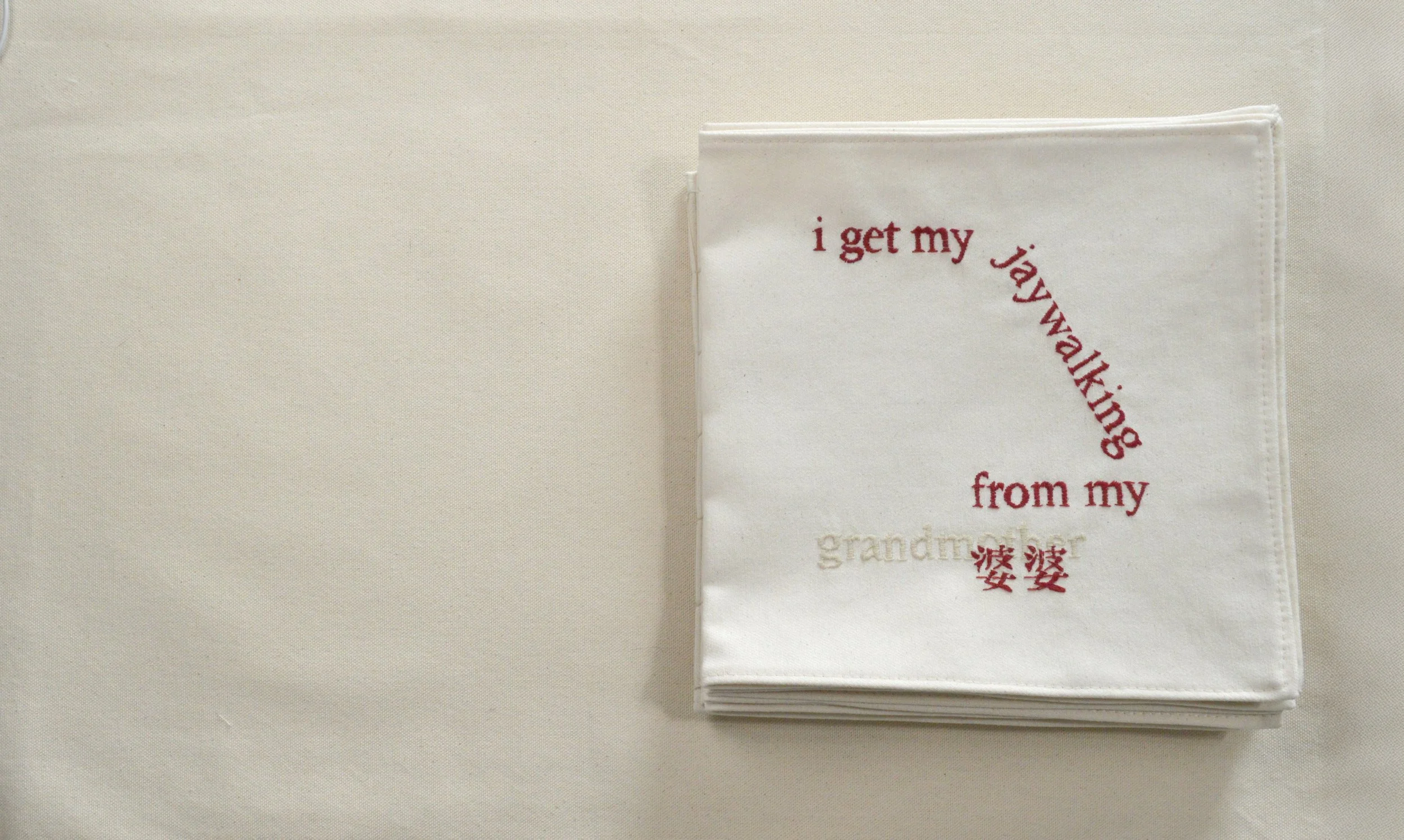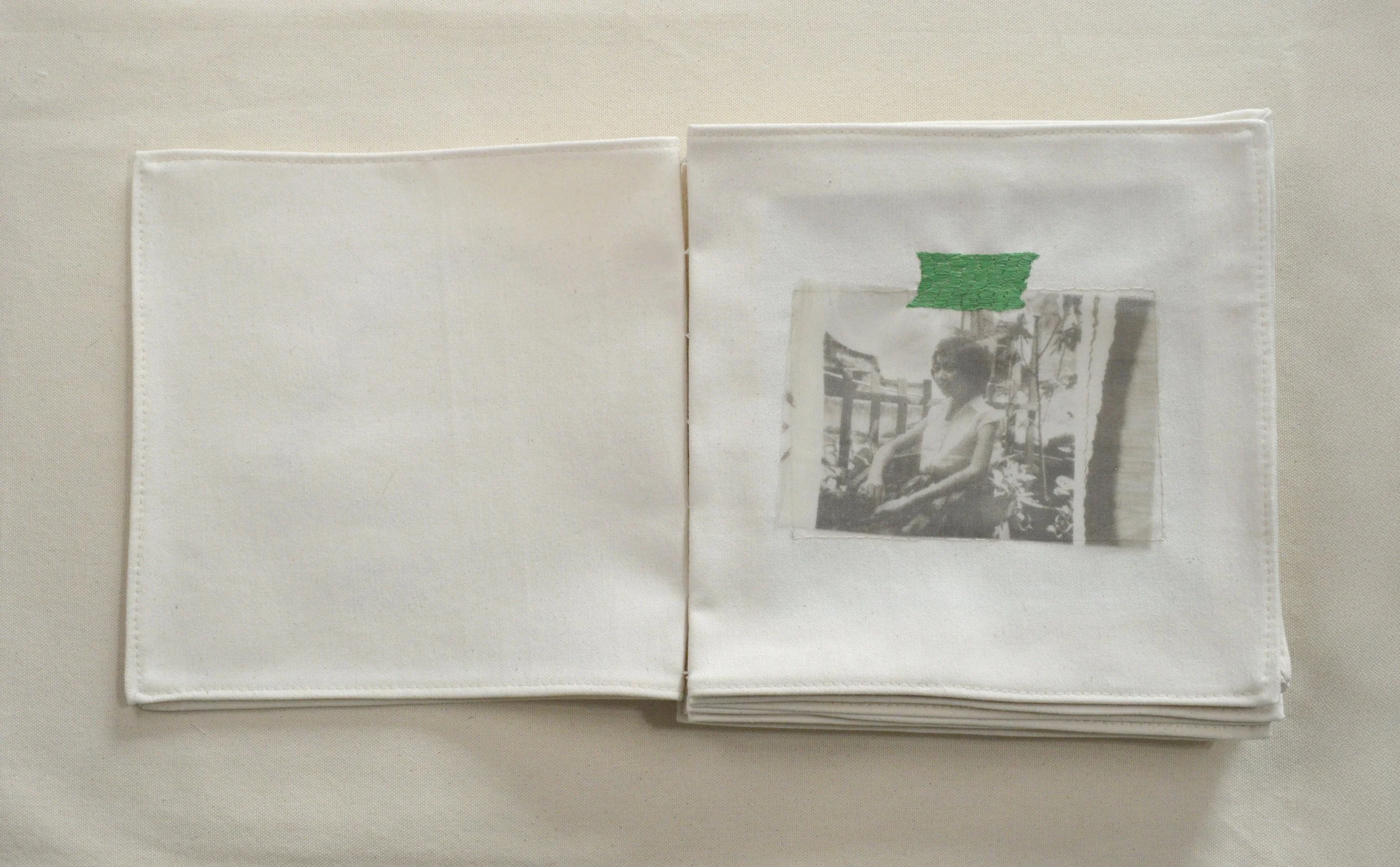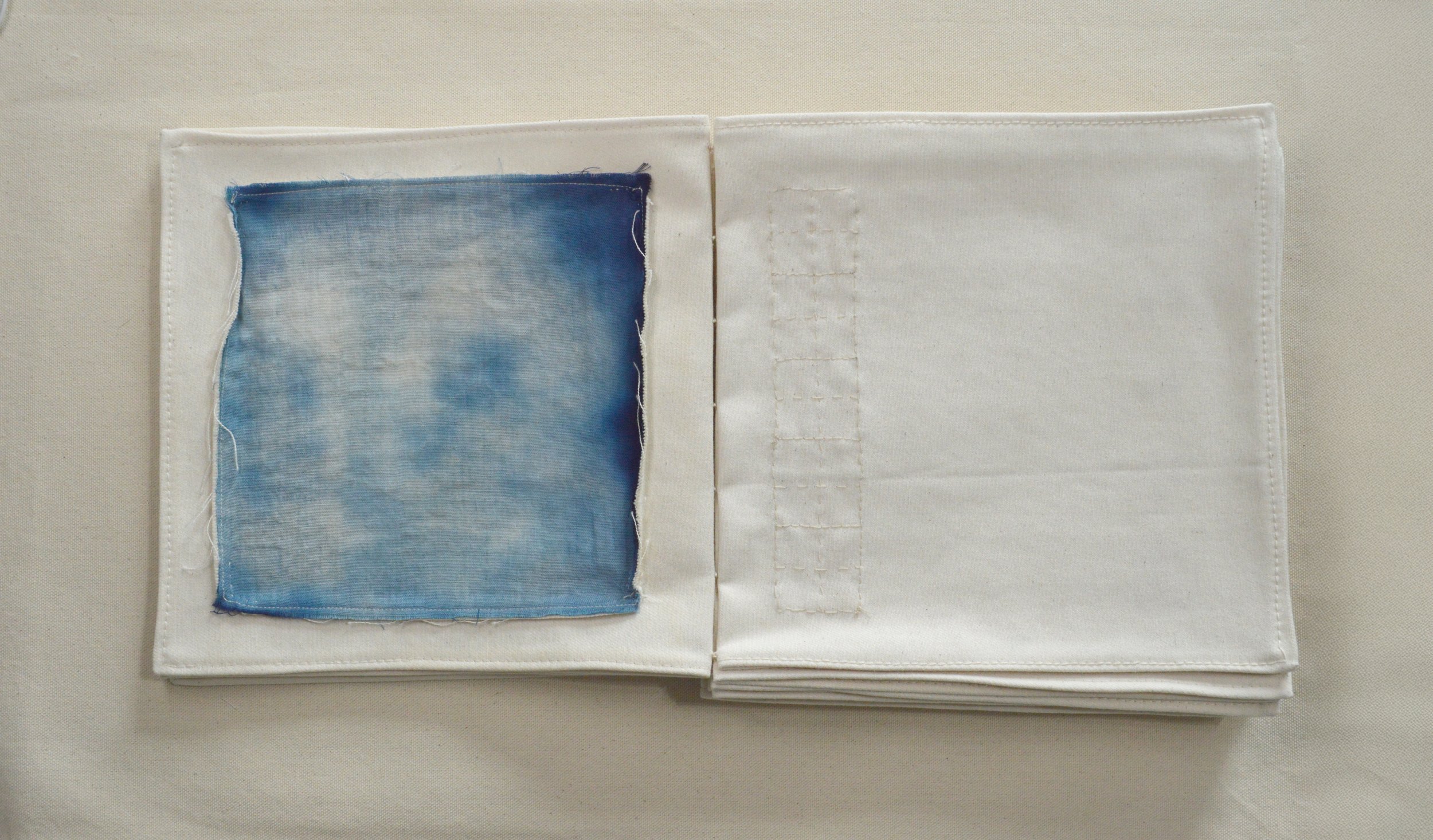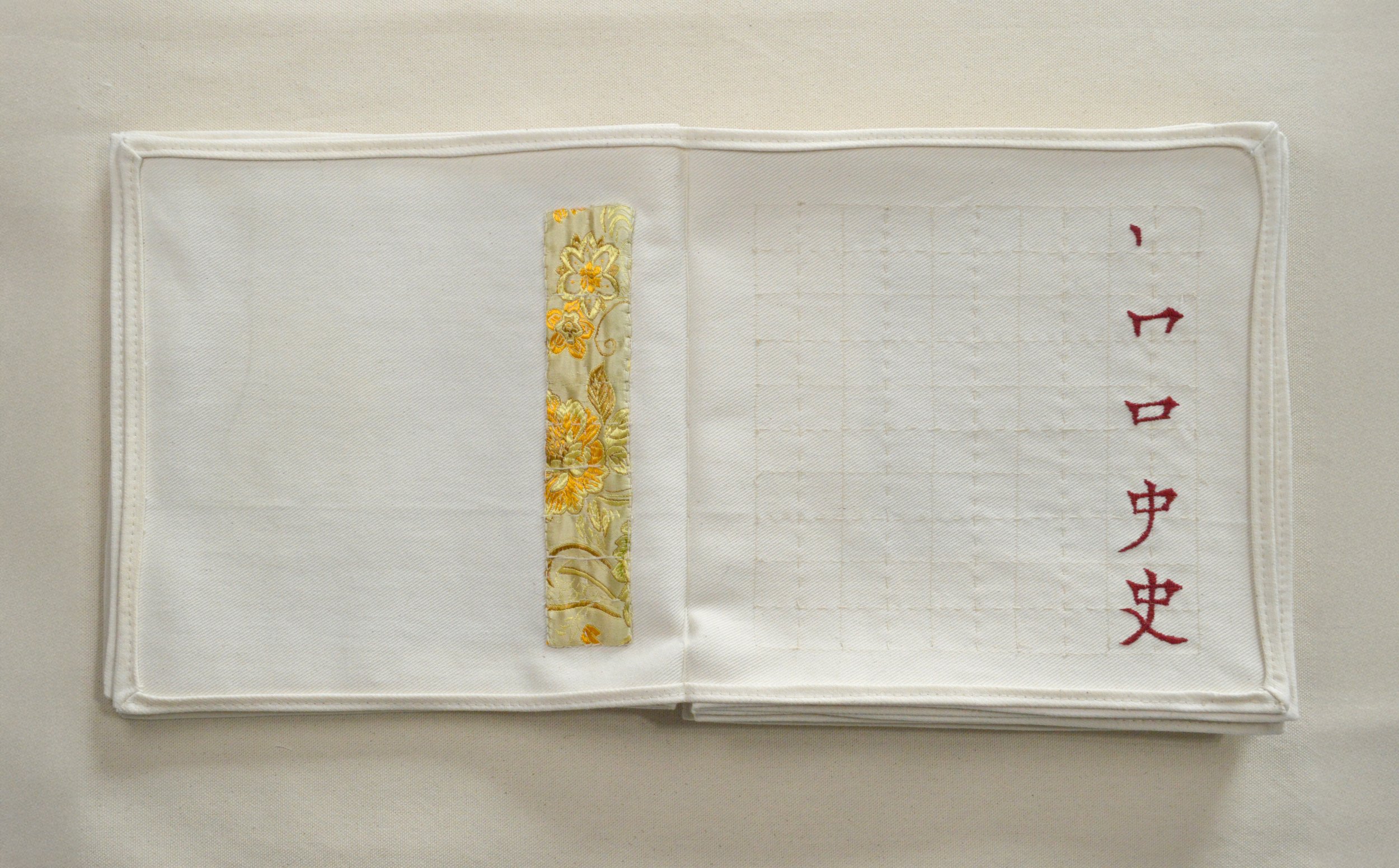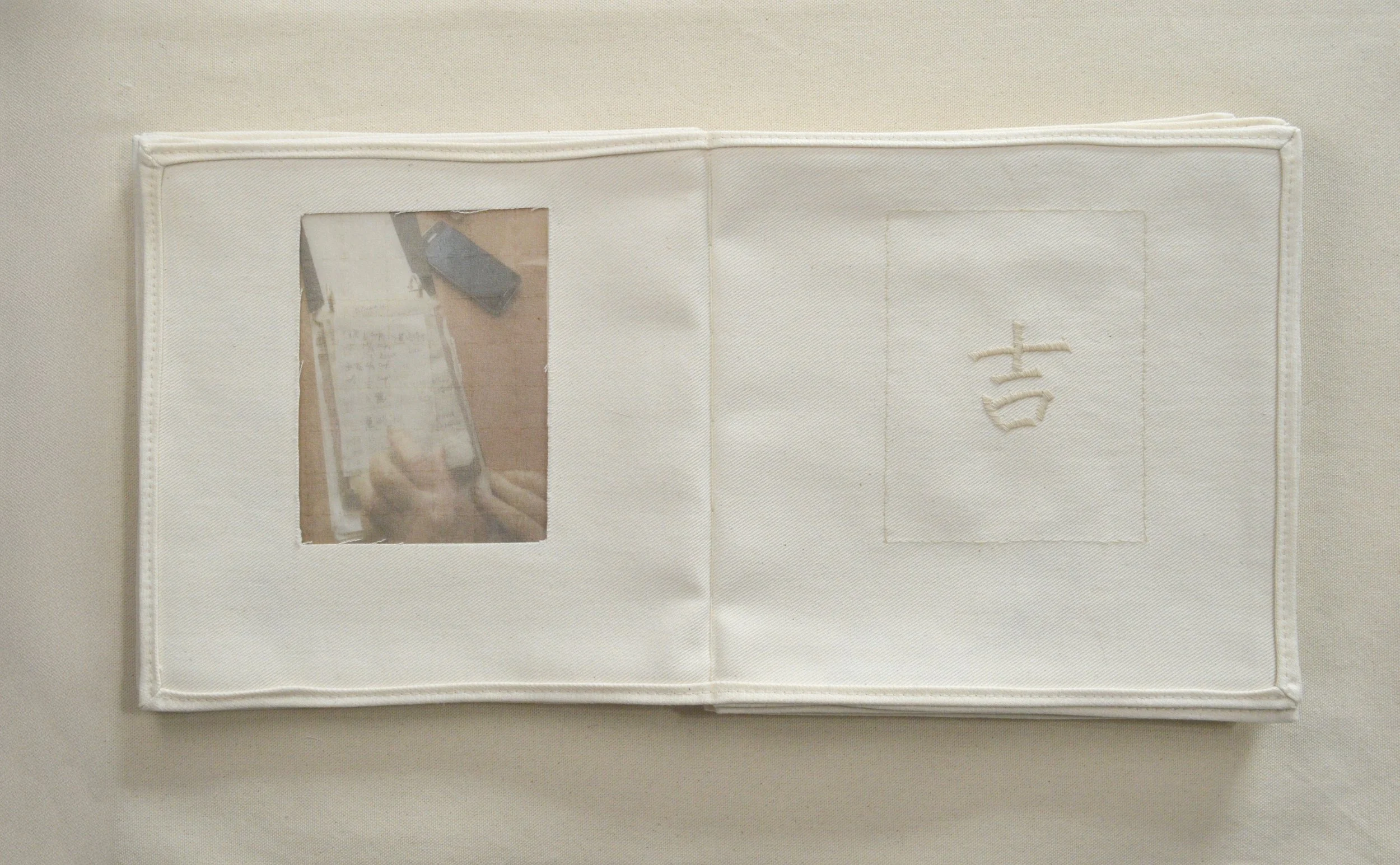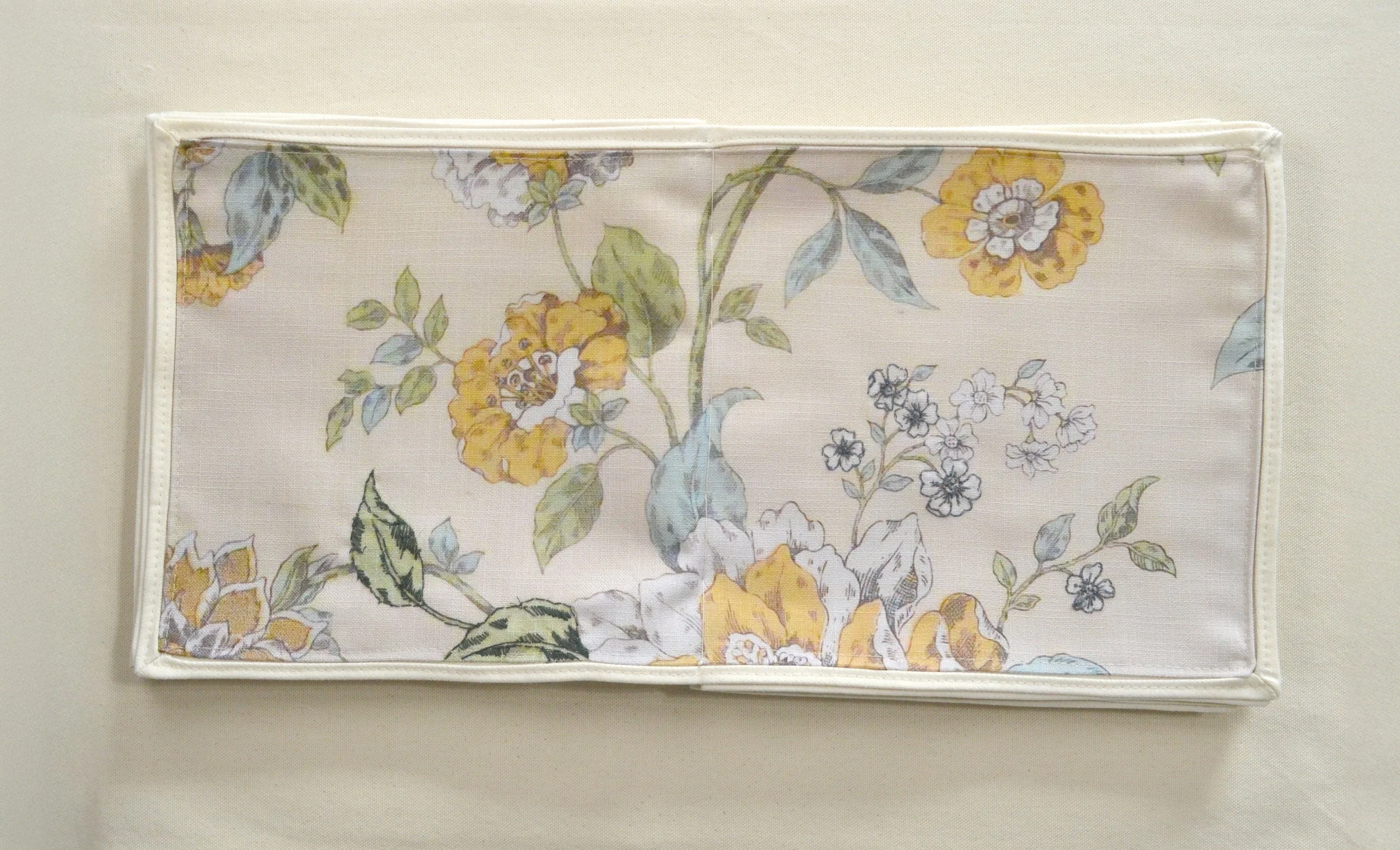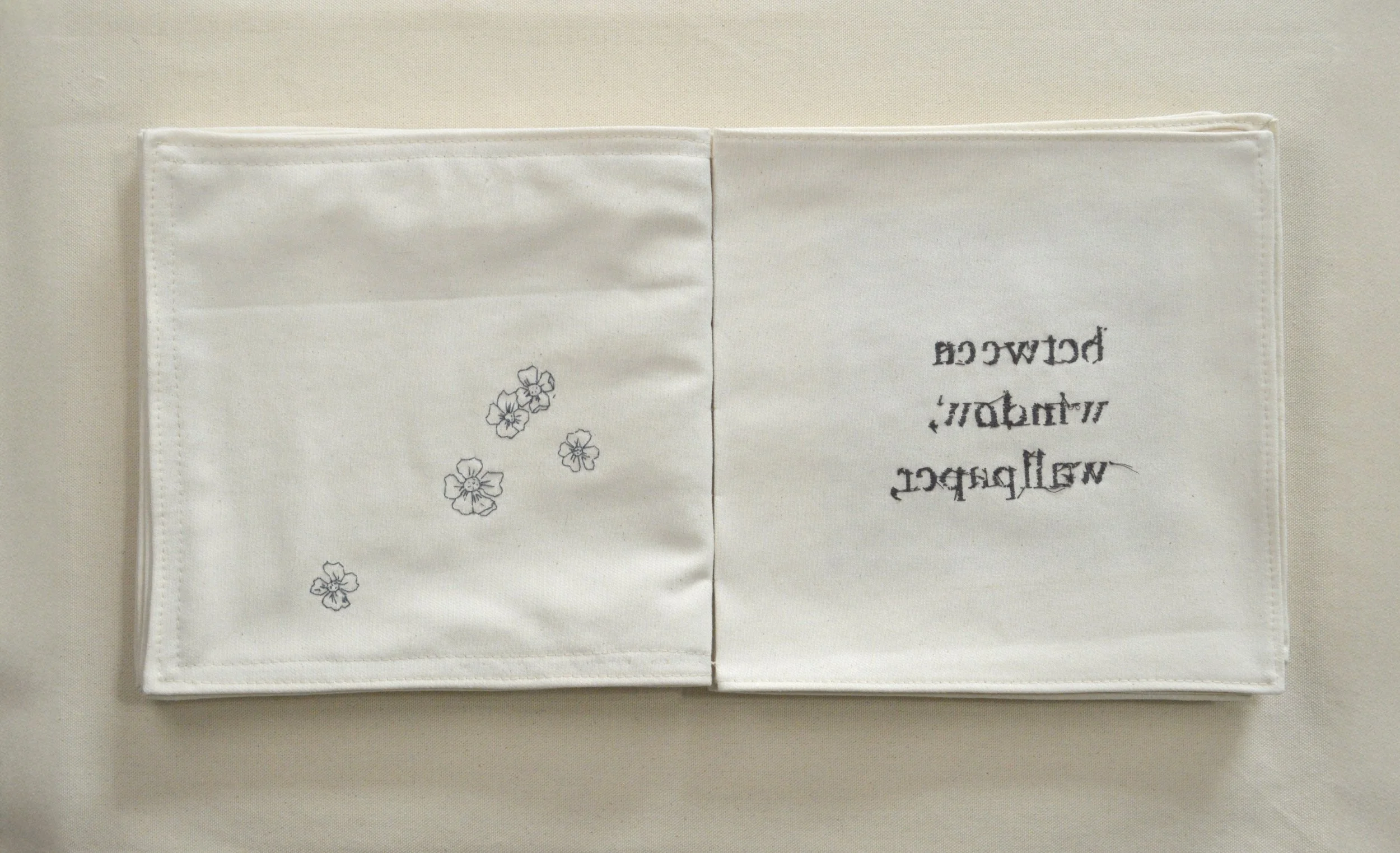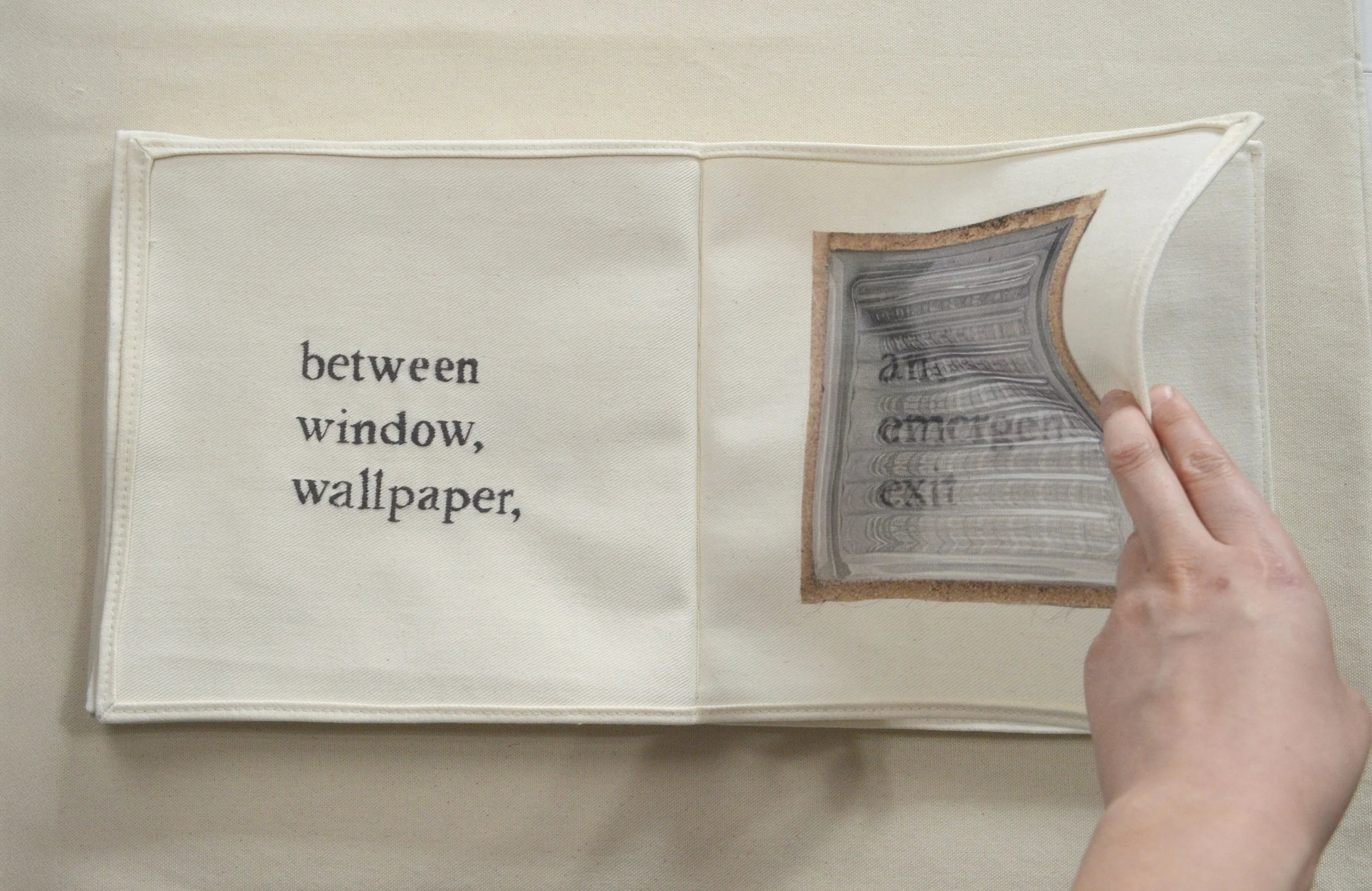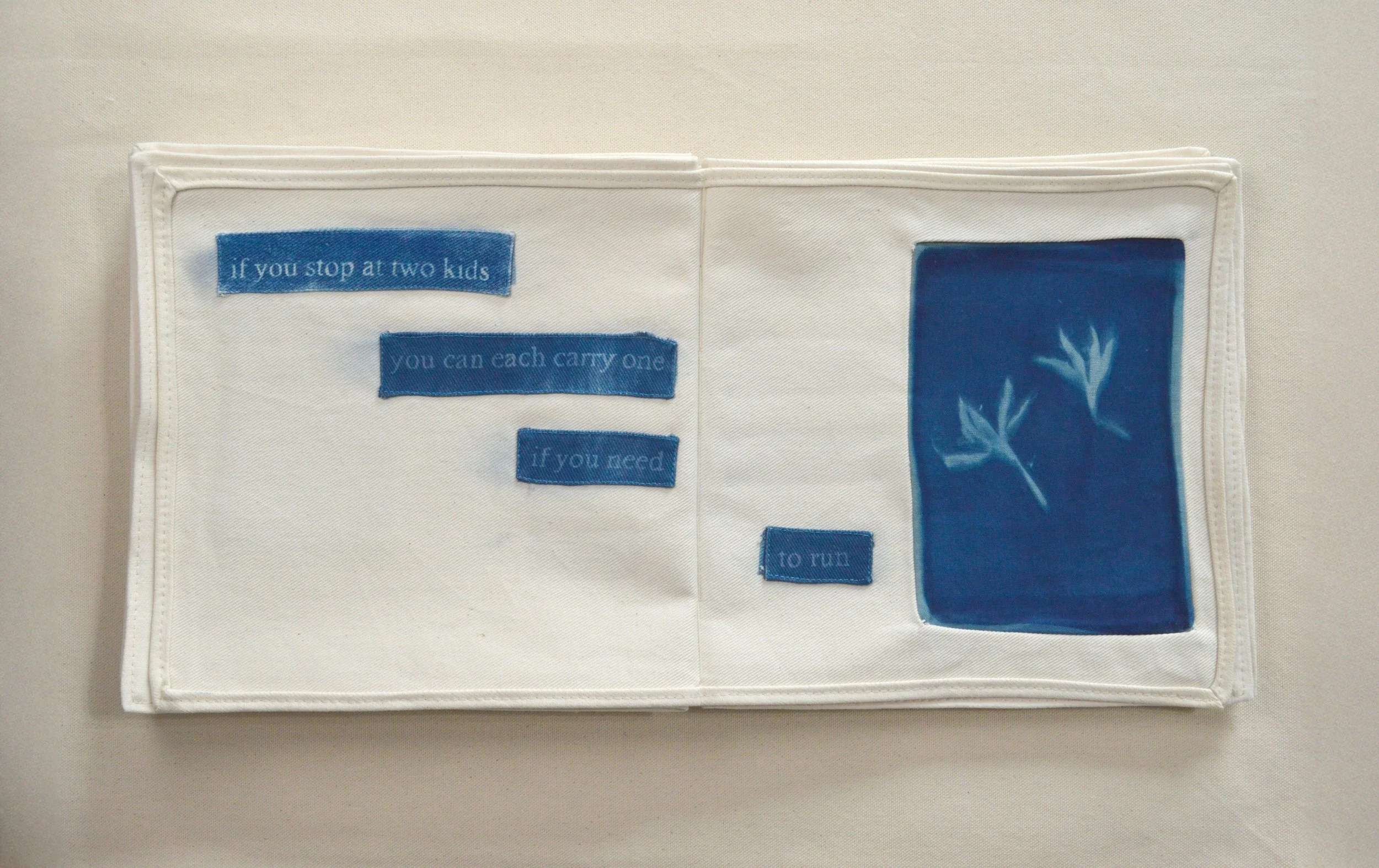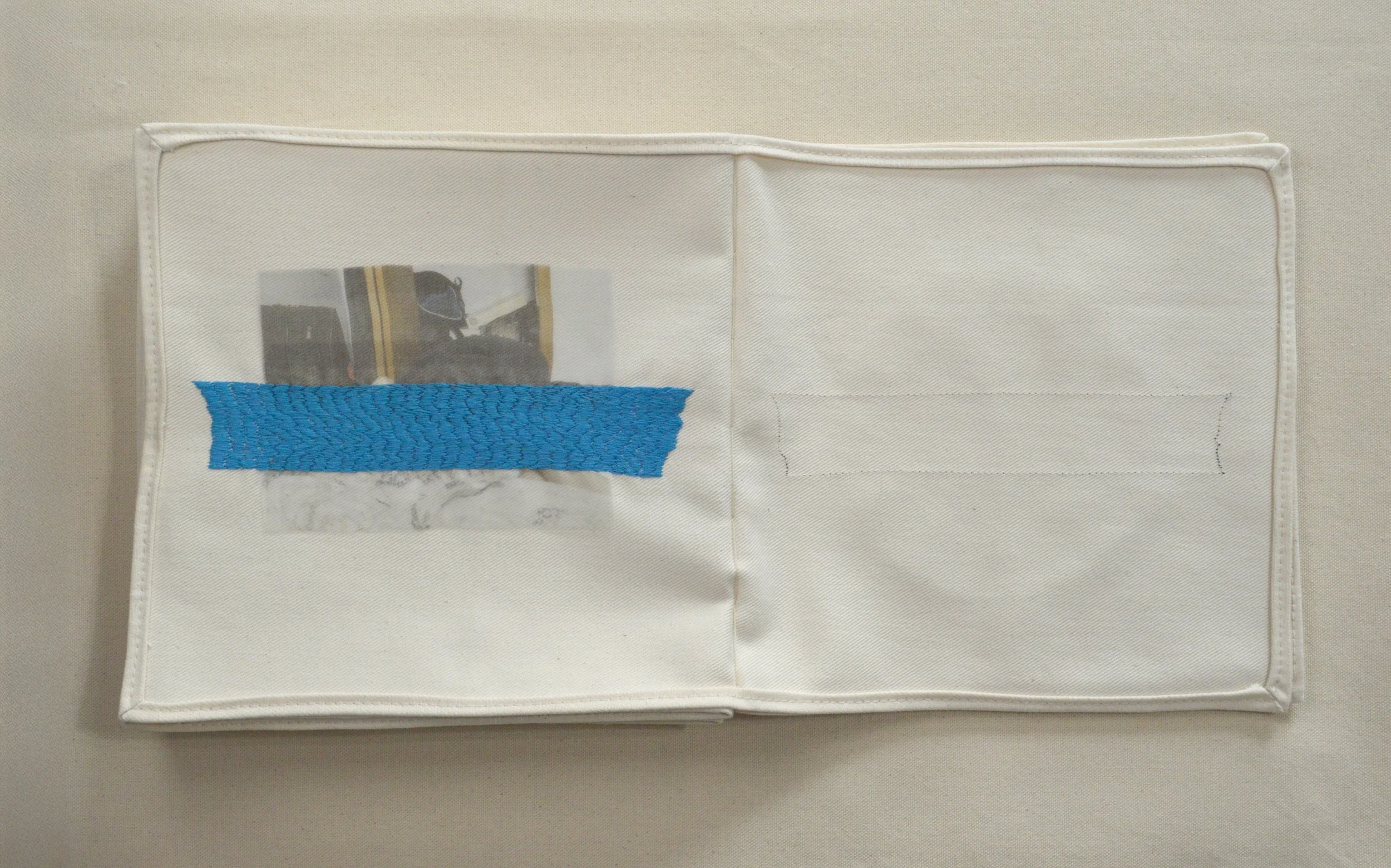A series of fabric books taking a closer look at the productive role of absence in archives, through the creation of textile books about second-hand memory and unknown inheritance in my Chinese-Vietnamese family.
When my maternal family fled Vietnam after the fall of Saigon in 1975, my grandfather was allowed two suitcases, and he chose to fill it with photo albums. He cherished his family photos so deeply that he labelled the empty spaces in the photo sleeves, so as to not think something was missing from that pocket. Due to cultural superstitions, the word empty 空 in Cantonese is cursed because it is a homonym for the words evil or criminal 兇. Hence, Cantonese speakers will write the character ‘gaat’ 吉, meaning lucky, auspicious, fortunate, as a textual stand-in for emptiness. In my most recent project last year, the character 吉 is used as a fabric appliqué on the backs of misprinted photographs, and then installed within the rough framing of timber walls, simulating the hollow structures inside houses.
My grandfather’s gestures are a departure point for my exploration of an absence that embraces the unrecordable. How do we reframe the yearning to find missing images into a space of potential? Diasporic storytelling often finds itself in the gaps of second-hand memory: stories that might be retold slightly—or completely—differently depending on the listener, the preparation, the trust, and even the weather. Instead of looking for evidence of a singular truth, I want to create vessels that can contain multiple absences and contradictions, in recognition of the very human unreliability of recollection. I am inspired by Viet-Thanh Nguyen’s 2015 novel ‘The Sympathizer,’ a literary exploration of the protagonist’s dual identities as a biracial revolutionary spy, police officer, exile, and refugee. I appreciate Nguyen’s choice of fiction over straight autobiography, which protects living subjects and coheres characters around creative metaphors.
Through fragmentary accumulation, I will center my material exploration on found objects, misprints, and scraps from my studio (cotton canvas, gauze, silk, polyester) and scans of my grandparents’ remaining photo albums to create three fabric books. Instead of looking primarily at the subject of the photographs, I will be focusing on the containers’ personal structures: scrapbooking techniques, marginalia, personal notes, and bookmarks. I take inspiration from Louise Bourgeois’ 2002 edition of ‘Ode à l’oubli’ (translated from French as ‘Ode to Forgetting’), a book of lithography on textile and fabric collages, sourced from the artist’s wedding six decades earlier. Simultaneously an homage to—and an exorcism of—nostalgia, Bourgeois’ work demonstrates how encyclopedic formats can be imbued with personal affect across more than half a century.


